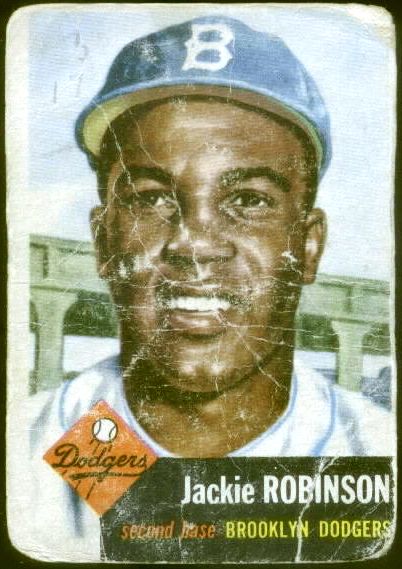In respectful observation of MLK day, please enjoy this tribute card to Dr. Martin Luther King, Jr. Of course, there’s no shortage of well-researched articles, essays, and other accounts about Martin Luther King, Jr. and his national, even global legacy. Likewise, King’s far-reaching influences are also recognized in his impact on baseball. In truth, and with consideration of the historical timeline, it is probably easier to claim that baseball and its barrier-breaking players of color held far-reaching influences and recognized impact—on King and his civil rights mission. (In “Baseball’s Impact on Martin Luther King Jr.,” writer David suggests as much.) Indeed, former Dodgers pitcher Don Newcombe incredulously relayed one occasion when King himself praised the accomplishments of his predecessors in baseball in no uncertain terms:
‘Don, I don’t know what I would’ve done without you guys setting up the minds of people for change. You, Jackie and Roy Campanella will never know how easy you made it for me to do my job.’
Can you imagine that? How easy we made it for Martin Luther King!
In any case, preceding and eventually alongside King, legends like Jackie Robinson, Satchel Paige, and many other important early African American ballplayers made their own special kind of civil rights contributions and advancements in sports culture and beyond.
Doubtlessly, though, King sold himself short in that exchange with Newcombe. Anyone can see as much. Look at the common thread that runs through the many histories and retrospectives: despite the context or means of communication, Martin Luther King, Jr. preached hopeful messages of freedom and equality through emphasis on brotherhood, sisterhood, and, simply, humanity. Directly or indirectly, the force of his oratory persona, rhetorical skill, and those essential principles resonated with and profoundly touched countless individuals and communities. That resonation carried (back) through the baseball world as well.
For example, St. Louis Cardinals center fielder Curt Flood certainly revered the man, and Flood made a gift of a painted portrait of Martin Luther King, Jr. to King’s widow (though there’s debate about whether Flood actually painted or merely “commissioned” such work). Then there’s the notable telegram that Martin Luther King, Jr. once sent to Jackie Robinson. It’s even as though a King-like aura would eventually transmute and metamorphose in Robinson himself in his later, more official advocacy and leadership roles like his work for the NAACP. But ultimately it is speculation as to who made more of an impression on whom over the course of King and Robinson’s face-to-face meetings and whatever other correspondence. Still, not unlike that renowned power King possessed—to inspire audiences and listeners and move them to tears with his words—Robinson seemed to have a bit of that in him, too. For example, in No No: A Dockumentary (2014), Dock Ellis shares a letter addressed to him from Jackie Robinson; Ellis audibly, almost uncontrollably weeps on the tape recording upon reading Robinson’s note. Instances such as these powerfully suggest the manifold ways in which a legacy like King’s can live on and be passed down through generations in kindred stories and artifacts.
To add to those stories and artifacts, this poignant, colorful photograph of Martin Luther King, Jr. playing baseball with his son may also be worth a look. The photo resides at the Dolph Briscoe Center for American History in the Flip Schulke Photographic Archive. The photo presents a different, more intimate side of this noted historical figure—perhaps a more human side than the one with which we have grown accustomed. (Note: another copy of this image, sans watermarks, appears in this photo slideshow, also found in the center’s archive.)





